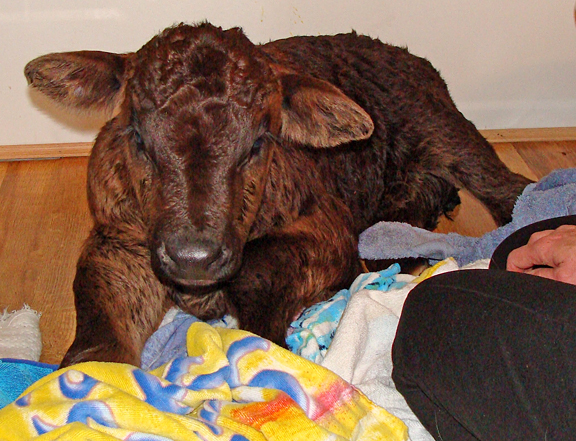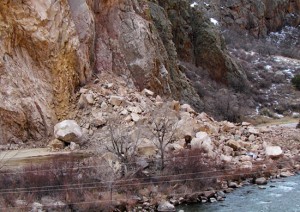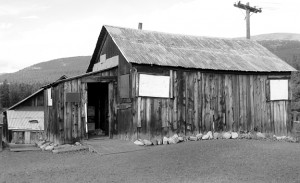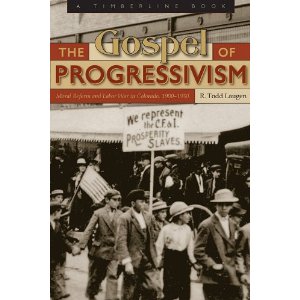by Hal Walter
When I started out with cattle, everything I knew about them was stated on the biggest check I’ve ever written for nine cows and five calves. That was in 2005 and I guess I’ve learned a few things about bovines since.
We’re in what is known as the “backyard beef” business, and do things a little differently than larger producers. We’re basically raising natural meat for ourselves, friends and family. This way we can make sure our animals are raised humanely and are not fed unnatural things, which as far as I’m concerned is anything other than grass or hay.
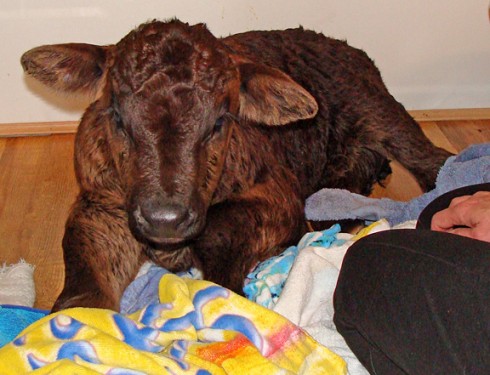
In fact, about the only thing really unnatural about our little operation is the time of year a couple of our cows have been calving. While our herd is small, we still have the macro-management problems of a bigger operation. Thus, the winter-born calves.
This year the first was a surprise January calf that was born one night when the thermometer plummeted to 14 degrees below zero.
Many ranchers do start calving in January and I’d seen other early calves in pastures in recent days. But, damn, minus 14? I’ve spoken with veterinarians about this and they say calves can handle extremely cold temperatures just fine so long as they remain dry, and there’s no wind or blowing snow. The mother cow licks the calf dry and gets it to nurse warm milk quickly. Calves also are born with a high ratio of brown fat that helps keep them warm.
Our winter weather in the Wet Mountains can best be described as “bi-polar.” We’ll have stretches of relatively nice weather, punctuated by windstorms, snowstorms and Arctic cold. Somehow, the cows always seem to choose the snowstorms or the Arctic cold for giving birth.
Some say it has to do with barometric changes. That may be the case. But what’s the long-term evolutionary strategy here? Perhaps over time cows became genetically programmed to have calves during storms because predators move around less then. Or maybe the ground is more sterile in these conditions. Perhaps there’s some other reason we can’t fathom.
Or maybe calves are just born when they’re born.
In the past years we’ve had a few calves arrive in bad conditions – actually a wet snowstorm in March or April scares me more than extreme but dry cold in January – and they all seem to do just fine. I sometimes wonder if we humans apply too much of our own sensibilities to these situations when in fact Mother Nature has it all under control.
When I checked on the new calf at dusk that evening, the temperature had risen to a balmy 18 degrees and he was running in circles around the big cows like it was a warm spring day.
About a month later, Super Bowl Sunday, I noticed a cow missing from the herd and went looking for her. It had snowed overnight and I found the missing cow downhill from the group, lying in some rabbit brush. I watched as she gave a final push and a new calf slid to the ground. The mother stood and turned to the calf, and I walked away to leave her to her work.
Things were going just fine until the following evening, when a nasty storm blew in from the north with more snow and strong winds. The next morning we received a call that school had been cancelled, and when I went over to check on the livestock I found the new calf on the other side of a fence from its mother, curled up against a Ponderosa pine, covered in ice and snow, nearly dead.
I struggled in the snow to get the calf to the barn, finally resorting to using a horse blanket as a sled. Once inside and out of the wind, I immediately put it underneath a heat lamp.
A cell-phone call to veterinarian Kit Ryff brought the suggestion of bringing the hypothermic calf inside and putting it into a very warm bath. And so with my son home on a snow day, my wife Mary unable to go to work and my neighbor Patti up for helping out, we drove over to the ranch, put the calf on the truck floor, brought it home and drew a bath. Kit, meanwhile, was in this general ZIP code, and said he’d bring by some electrolyte supplement.
The calf looked like so much dead meat in the tub, and I had the odd thought that if it lived we’d be eating this animal in a couple of years. Mary, amazingly, took charge, but then she is a nurse. She ran the water and tended to the calf in the tub. We used a lot of old towels supplied by Patti and Mary’s hairdryer to get him dry. Kit arrived and tube-fed the calf some of the warm electrolyte potion. Then we left him on the bathroom floor to dry in front of the wall heater.
There was some comic relief and a mad scramble for tools when Harrison locked the calf in the bathroom, but luckily no damage.
After some time we were able to get the calf on his feet. I tube-fed him again with electrolyte, and late that afternoon we drove him back over to the ranch and turned him out with his mother. I held my breath wondering if the cow would take him back now that he no doubt smelled like our bathroom, but she seemed to recognize him right away.
Overnight the temperature dove to minus 20. I was certain the next morning I would find that calf frozen stiff.
But the cow had moved him to a south-facing hillside where he could soak up some southern sun. Over the next couple days she gradually incorporated the calf back into the herd.
Against the odds, the little calf made it, and in the meantime I’ve found a place to keep our bull away this spring so we can avoid future winter calves.
Hal Walter writes and edits from the Wet Mountains. You can keep up with him regularly at his blog: www.hardscrabbletimes.com
